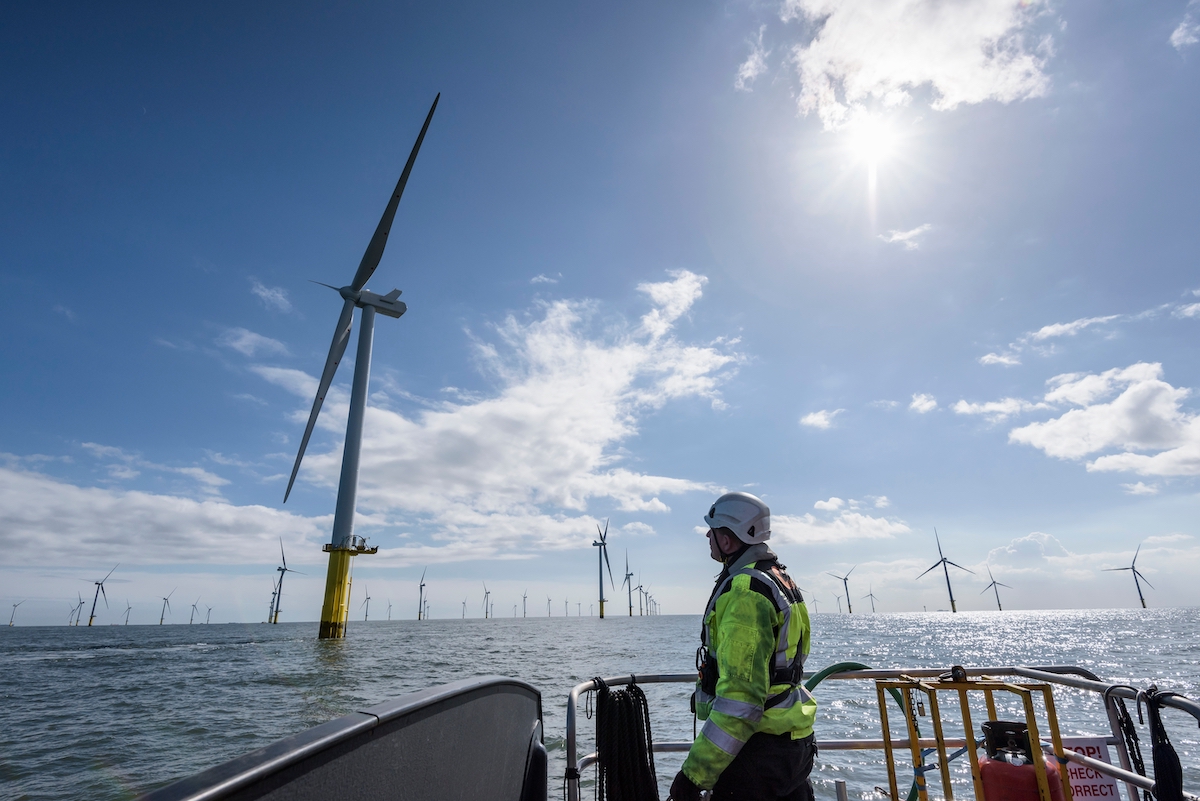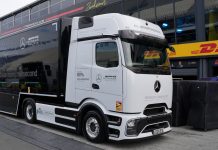Michel Maaskant, Sector Sales Specialist for Offshore Renewables at Aggreko discusses how to overcome the technical barriers in offshore wind projects
Developers are under increasing pressure to construct enough wind farms to meet the EU’s renewable energy targets. By 2030, at least 42.5% of all electricity produced across the bloc must come from green sources, effectively doubling the share of renewables within the overall energy mix.
Though crucial to the energy transition, these ambitious targets present significant challenges nonetheless for those involved in offshore wind farm development, especially given how vital wind energy is to decarbonising the grid. Indeed, its use is growing rapidly across Europe, with capacity needing to more than double from 204 GW to 450 GW by the end of the decade.
But while the need to build is well-established, a lack of grid connections continues to hamper the build process. For instance, in April 2023, Energy Monitor reported there was 11.4 GW more EU wind capacity in permitting than a year earlier, yet a 2024 report by industry analyst Ember highlighted that 11 out of 26 grid plans across Europe were based on outdated national wind and solar targets. Such a contrast means that unless strategies are revised, the grid may consistently lag behind renewable development and leave more projects in limbo.
Scaling Up Supply Chains
A shortage of capable suppliers for the offshore wind industry is compounding this situation. Simply put, existing supply chains are proving too small, underdeveloped and uncoordinated to efficiently move projects through the development stage at the ambitious pace required.
‘Acceleration areas’ with frictionless permits to expand and connect renewables to the grid may present a possible solution. However, these do not address the practical elements involved in wind farm construction, which require the right supply partnerships to address increasingly pressing concerns.
Race to Renewables
These issues are highlighted in the latest report from energy solutions specialist Aggreko, Race to Renewables. Surveying over 850 decisionmakers involved in the construction and commissioning of European offshore windfarms, it found that 39% of respondents felt a lack of temporary power solutions was the biggest barrier to growth.
Alongside this, 39% of those surveyed across eight key European regions – including the UK, Ireland, France, Germany, Italy, Spain and the Benelux and Nordic nations – cited transportation and logistics difficulties as the main challenge for accessing power. Such limitations present an ongoing challenge throughout all stages of an offshore wind farm’s development. Key among these is the construction phase, where power is needed to support cable-laying and heavy lifting vessels.
These concerns are driving further interest in temporary power solutions – a conclusion shared by respondents in Race to Renewables, who note that demand for these technologies has increased compared to five years ago. Given this, it is vital that those involved in equipment procurement processes ensure they are working with suppliers that can provide the technical support and technologies needed for offshore construction.
Aiding an Expanding Sector
With 41% of respondents citing a lack of technical support and expertise as a barrier to offshore wind projects, leveraging third-party knowledge and experience in the supply chain is increasingly crucial. This must also be considered against a backdrop of rapid expansion within this sector, where persistent temporary power issues may prove especially costly if appropriate solutions are not found.
For example, over €5bn is set to be invested across the European wind industry to help manufacturers secure advance payments and provide performance guarantees for new wind projects. In the UK, Labour’s decision to overturn the previous onshore construction ban and award nine offshore wind projects to generate 9.6GW of power[6] signals accelerating growth in renewables production.
Adapting for Emissions
With these circumstances in mind, Aggreko’s latest report demonstrates the value of strategic supply chain partnerships and associated expertise to correctly deliver suitable flexible energy solutions. Pivotal to this is the ability to adapt to changing industry requirements and priorities, including the use of greener technologies to reduce emissions during critical construction processes.
Race to Renewables’ findings further affirm a shift toward more sustainable practices within the sector, with 47% of those surveyed saying emissions regulations were the top environmental challenge for offshore wind developments. This is likely unsurprising given that the majority of embodied carbon is produced when turbines are being manufactured and erected. As wind farm construction is subject to strict emissions reporting requirements, informed specification of prospective site equipment and processes is required as standard.
Consequently, anticipating these sustainability challenges before they arise and impact operations is vital. Suppliers that are aware of these issues and are developing new approaches to addressing them are therefore well-placed to assist stakeholders involved in constructing offshore wind farms. Aggreko’s Energising Change™ framework, for instance, has been designed to support a commercially viable energy transition for companies in this sector.
This includes advancing turnkey solutions that bridge the gap between power provision, fuel management and transportation, and developing renewable infrastructure for the future. When it comes to the development of offshore substations, Aggreko is also heavily involved at all levels.
For example, the company’s engineers have carried out soak testing for HV components, delivered supplementary power for cable laying, drilling, lifting and shot testing, and provided modified generator sets for the commissioning of larger turbines. Additionally, Aggreko has been instrumental in the use of oil-free compressed air for underwater noise management and bubble curtains to protect marine wildlife around offshore wind projects.
Sourcing Suppliers
Such breadth of experience underlines why in the current offshore wind farm boom, it is not enough for suppliers to deliver equipment when required. Instead, a plan must be developed to address all potential issues throughout the site’s lifecycle, including construction, commissioning and ongoing maintenance requirements. Though all these stages are reliant on a consistent power supply, the most appropriate solution may vary depending on several factors, including when and where work is taking place.
This highlights the need for a partner that understands the offshore wind market and its unique challenges, with the ability to scale projects regardless of location. In light of the ambitious targets set for offshore wind across Europe, project stakeholders that utilise supply chain partnerships to bridge knowledge gaps and source well-specified temporary power solutions can get ahead of the curve.
For more information on Aggreko’s latest report, Race to Renewables, click here.
[1] https://www.euractiv.com/section/energy-environment/news/eu-strikes-deal-on-renewable-energy-law-agrees-42-5-target-by-2030/
[2] https://ember-climate.org/press-releases/eu-member-states-target-66-renewable-electricity-by-2030-slightly-short-of-the-repowereu-69-goal/
[3] https://www.energymonitor.ai/tech/renewables/data-insight-11-4gw-more-eu-wind-capacity-stuck-in-permitting-than-a-year-ago/
[4] https://www.edie.net/e5bn-plan-to-boost-eu-wind-industry-now-underway/
[5] https://www.glenigan.com/wind-farm-construction-to-soar-after-planning-u-turn/
[6] https://www.bbc.com/news/articles/c86ldzve4neo
[7] https://www.forbes.com/sites/christopherhelman/2021/04/28/how-green-is-wind-power-really-a-new-report-tallies-up-the-carbon-cost-of-renewables/?sh=61a252c273cd




